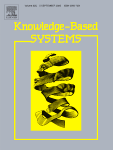At DSEI 2025 in London, MBDA introduced its new Crossbow missile system—a long-range land attack cruise missile designed to provide NATO forces with a cost-effective deep strike capability. With a stated range of up to 800 kilometers and compatibility with multiple launch platforms, the Crossbow is positioned to fill a critical gap between legacy systems like Storm Shadow/SCALP-EG and future high-end solutions under the FC/ASW program.
Crossbow Overview: A New Tier in MBDA’s Strike Portfolio
The Crossbow is a subsonic cruise missile designed for precision land attack missions at operational and strategic depth. According to MBDA representatives at DSEI 2025 and subsequent media briefings, the missile features:
- Range: Up to 800 km
- Warhead type: Likely unitary high-explosive or blast-fragmentation (not yet confirmed)
- Guidance suite: Multi-mode navigation including inertial navigation system (INS), GPS/GNSS updates, terrain contour matching (TERCOM), and possibly imaging infrared (IIR) terminal guidance
- Launch platforms: Ground-based launchers (truck-mounted), naval vertical launch systems (VLS), and potentially aircraft
This places it squarely in the medium-deep strike category—longer-ranged than GMLRS-ER or PrSM Increment 1 (~500 km), but shorter-ranged than FC/ASW’s projected >1000 km reach. The design appears optimized for affordability and flexibility rather than stealth or survivability in heavily contested airspace.
A Response to Evolving Operational Needs
The emergence of the Crossbow reflects shifting NATO priorities in response to lessons from Ukraine and broader Indo-Pacific concerns. With Russia’s extensive use of long-range fires—including Kalibr cruise missiles—and Ukraine’s successful employment of Storm Shadow/SCALP-EG against high-value targets deep behind Russian lines, there is renewed emphasis on affordable standoff precision fires.
MBDA appears to be targeting countries seeking enhanced strike reach without the budgetary or political hurdles associated with acquiring top-tier systems like Tomahawk or FC/ASW. The Crossbow could be particularly attractive to Eastern European NATO members seeking deterrent capabilities within INF Treaty-free constraints.
Platform Agnostic Launch Options
A key design feature of the Crossbow is its modularity across platforms. At DSEI, MBDA displayed mockups showing integration concepts for:
- Tactical truck-based launchers similar to HIMARS or Czech RM-70 systems
- Naval VLS cells compatible with Sylver or Mk41-type launchers
- Potential air-launched variants from fighters such as Eurofighter Typhoon or F-16 (though not yet confirmed)
This multi-domain compatibility supports dispersed operations under Multi-Domain Operations (MDO) doctrine. It also enables smaller militaries to field credible deep-strike options without dedicated bomber fleets or large surface combatants.
Differentiation from Storm Shadow and FC/ASW Programs
The Crossbow is not intended as a replacement for existing MBDA products like Storm Shadow/SCALP-EG nor as a competitor to the Franco-British Future Cruise / Anti-Ship Weapon (FC/ASW) program currently under development. Instead, it fills an intermediate niche:
| System | Range | Status | Cost Tier |
|---|---|---|---|
| Storm Shadow / SCALP-EG | ~250–560 km | In service since early 2000s | High-end legacy system |
| Crossbow | Up to ~800 km | DSEI debut; pre-production phase (as of late 2025) | Mid-tier / cost-effective option |
| FC/ASW Future Cruise Missile | >1000 km projected + anti-ship capability | In development; IOC expected ~2030+ | Next-gen premium solution |
This tiered approach allows MBDA customers—including France and the UK—to tailor force packages based on threat environment and budgetary constraints while maintaining interoperability within NATO frameworks.
Status of Development and Procurement Prospects
No firm contracts have been announced yet for production orders of the Crossbow as of September 2025. However:
- The UK Ministry of Defence has reportedly expressed preliminary interest under its Land Precision Strike requirement.
- Czechia and Poland are evaluating options for truck-launched long-range fires beyond HIMARS/GMLRS capabilities.
- NATO’s DIANA initiative may support dual-use applications via funding mechanisms focused on scalable precision strike technologies.
- A potential export variant could be offered outside Europe depending on ITAR-free component sourcing.
The timeline for initial operational capability will depend on customer uptake during late-stage development over the next two years. If funding materializes by mid-2026, IOC could occur by ~2028–29 based on typical MBDA timelines for comparable systems.
Tactical Implications in Contemporary Conflict Scenarios
If fielded widely across Europe’s eastern flank or by expeditionary forces operating in contested littorals such as the Baltic Sea or Black Sea regions, the Crossbow could offer several tactical advantages:
- Saturation attacks against enemy IADS nodes using salvo tactics from dispersed ground units;
- Crisis-time deterrence through demonstrable ability to hold command bunkers or logistics hubs at risk;
- Simplified logistics compared to air-launched munitions requiring specific aircraft integration;
- Plausible deniability via ground-based deployments that blur attribution compared to manned strikes;
This aligns with current trends toward distributed lethality and “shoot-and-scoot” survivability models seen in Ukraine’s evolving TTPs involving GMLRS/HIMARS strikes paired with ISR drones.
A Strategic Play by MBDA Amid Global Competition
The unveiling of Crossbow also signals MBDA’s intent to compete more aggressively against U.S.-made alternatives like Lockheed Martin’s PrSM Increment variants (~500+ km) and Raytheon’s Tomahawk Block V (~1600+ km). While those programs benefit from scale economies via U.S. DoD procurement pipelines, they remain costly—and often subject to export restrictions under ITAR regimes.
If priced competitively—likely below €1M per round—the Crossbow could attract buyers seeking sovereign control over their long-range fires inventory without relying on U.S.-based supply chains. Its European origin may also enhance eligibility under EU defense funding frameworks such as EDF/PESCO initiatives focused on strategic autonomy.
Conclusion: A Gap-Filler With Strategic Potential
The MBDA Crossbow emerges not merely as a technical product but as a reflection of changing strategic calculus within Europe’s defense ecosystem. By offering an intermediate-range cruise missile that balances cost-effectiveness with credible reach across multiple domains, it responds directly to lessons from recent conflicts while anticipating future operational demands. Whether it secures widespread adoption will depend on procurement timelines—but its debut marks another step toward layered precision strike architectures among NATO forces.









